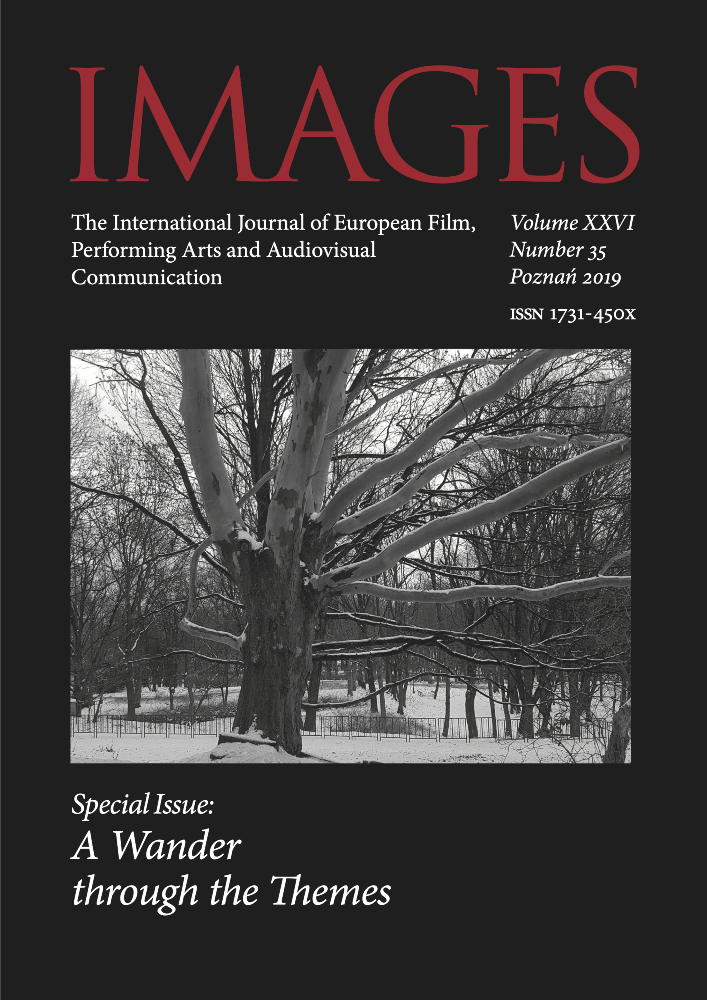Abstrakt
The article proposes the hypothesis that on the basis of analytical and interpretative practices, when describing, analysing and interpretating moving images, a dichotomous, binary division into objective and subjective images is a highly questionable move: it does not lend itself to an absolutely unequivocal resolution. In film, as in the field of moving images as a whole, there is no objective narration, just as there is no subjective narration. What emerges is an ostensibly dependent narration (or ostensibly independent), blending and merging both of these aspirations in diverse ways.
Bibliografia
Bal M., Narratologia. Wprowadzenie do teorii narracji, trans. E. Kraskowska, E. Rajewska, Kraków 2012
Bordwell D., Narration in the Fiction Film, London 1985
Chatman S., Coming to Terms. The Rhetoric of Narrative in Fiction and Film. Ithaca, NY, 1990
Hendrykowski M., Semiotyka ruchomych obrazów, Poznań 2014
Hopensztand D., Mowa pozornie zależna w kontekście “Czarnych skrzydeł”, [in:] Stylistyka teoretyczna w Polsce, red. K. Budzyk, Warszawa 1946
Łotman J., O modelującym znaczeniu “końca” i “początku” w przekazach artystycznych (Tezy), trans. J, Faryno, [in:] Semiotyka kultury, red. E. Janus, M.R. Mayenowa, Warszawa 1975
Ostaszewski J., Historia narracji filmowej, Kraków 2018
Przylipiak M., hasło Narracja [in:] Słownik pojęć filmowych., vol. 5, ed. A. Helman, Wrocław 1993
Reinventing Film Studies, eds Ch. Gledhill, L. Williams, London 2000
Thanouli E., Post-classical Narration. A New Paradigm in Contemporary World Cinema, Amsterdam 2005
Licencja

Utwór dostępny jest na licencji Creative Commons Uznanie autorstwa – Użycie niekomercyjne – Bez utworów zależnych 4.0 Międzynarodowe.
